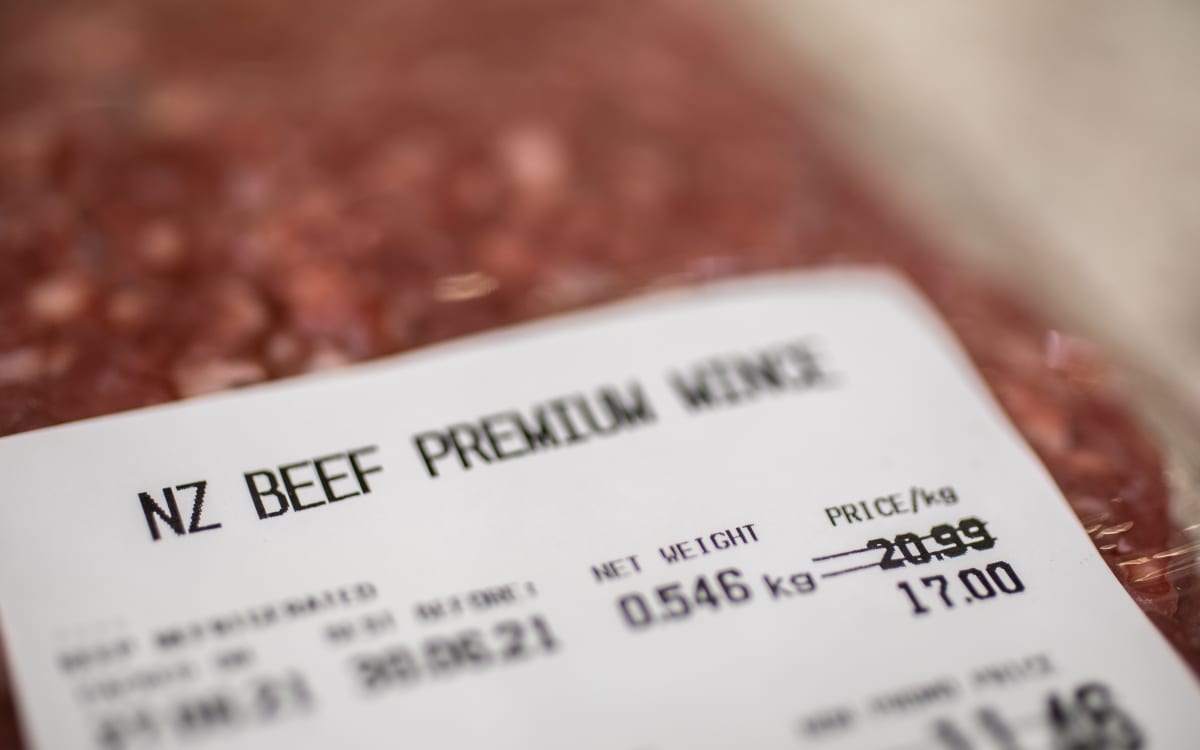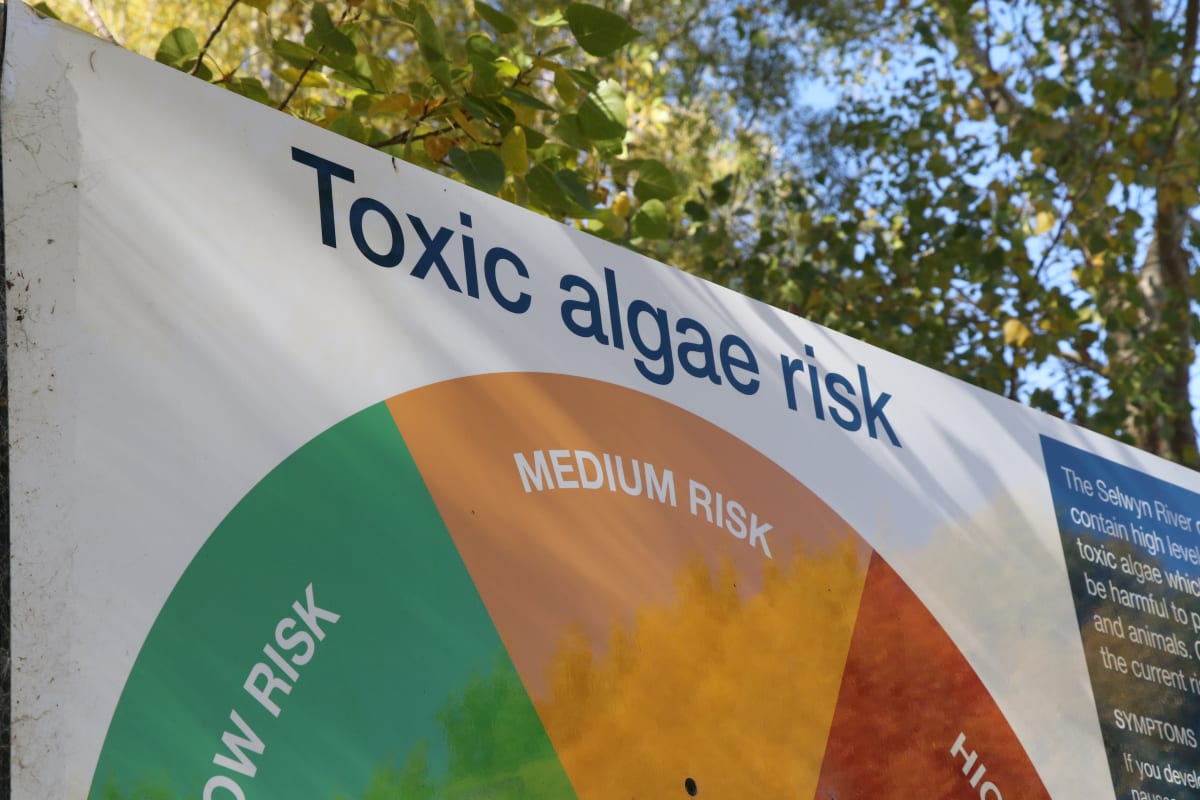
Is it time for the Government to treat agriculture like tobacco? David Williams reports in this piece for the global Covering Climate Now week
What to do about agricultural pollution is a difficult and vexed question for a country sitting at the intersection of food and the environment.
Billions of export dollars – an estimated $52 billion in the current financial year – versus pollution of waterways and the climate, the destruction of biodiversity, and harm to humans.
That’s right, harm to humans.
What’s already well-known is eating high levels of red meat increases the risk of heart disease – New Zealand’s biggest killer – and stroke. Processed meats, such as ham and sausages, are known to increase risks of colorectal cancer – the country’s second-highest cause of cancer death, behind lung cancer.
Now, emerging research warns of the dangers of drinking water with high nitrate concentrations. It’s thought water pollution, especially in dairy-heavy areas, might be making rural people sick, or leading to babies being born early, with low birth weights.
Steve Abel, a senior campaigner for environmental lobby group Greenpeace Aotearoa, says one of a government’s most important roles is to legislate and regulate to set the boundaries within which industries operate, but it appears to have lost sight of that.
“If you look at restriction of alcohol sales, you look at restriction of tobacco sales, if you look at the prohibition of substances like asbestos, or the complete prohibition of lead in petrol, these are things that are put in place by governments.
“Government steps up and says that’s clearly causing a problem, our role is to protect the social good for the entire community.”
Alex Macmillan, a public health physician and associate professor of environmental health at University of Otago, says to get real traction on climate and food policy in this country there needs to be a reduction in the sway of commercial interests – “so that we can make evidence-based policies instead of industry-driven policies”.
Public health has an effective history in this area, Macmillan says, through increasingly effective policies to reduce harm from tobacco; policies that were strongly opposed by the tobacco industry.
“There are really clear parallels here with the history of tobacco control, where we started out with the tobacco industry sitting at the policy table, and talking about voluntary controls and education, and individual responsibility for change. And then, over many years, it was clear that those things aren’t effective.”
Importantly, the UN Framework Convention on Tobacco Control made it a requirement for governments to make legislation on tobacco while protecting the policy process from commercial interests, which, Macmillan says, allowed a shift from education to effective measures like regulation.
It’s worth stepping back to take in the whole picture.
We’re growing vast volumes of feed for animals, using huge amounts of water and fertiliser, and then harvesting them, or their products, like milk, to feed humans (almost all of them overseas).
In the process, the dairy industry is the second-biggest burner of coal, behind the Glenbrook steel mill, to dry milk and send overseas. Rather than placing protein into the desperate hands of the starving or malnourished, research shows that, in every region of the world, global meat and dairy is landing on the tables of the relatively well-off, people whose diets contain more protein than what’s considered healthy.
What follows is a cascade of consequences, which is keenly felt in places like Canterbury.
Synthetic nitrogen fertiliser, the second-biggest source of nitrous oxide emissions, is driving dairy cattle numbers, the leading cause of methane emissions. In turn, thanks to cattle urine and dung, the largest source of nitrous oxide emissions, waterways are being contaminated. Now it’s being suggested if contaminated water is drunk by humans in high enough concentrations over a long period it could be carcinogenic.
Abel, of Greenpeace, isn’t anti-farmer. He says we need to learn to live without fossil fuels, but we’ll always need farming.
“Some people think we might better produce everything in labs but I think that’s somewhat fanciful, and that would be a pretty grotesque world,” he says.
“It’s about the way that we farm. So there are measures that can be taken within the farming sector to stop it being a thing that causes the destruction of the climate, of biodiversity, of river health, of human health.”
The harms are clear, including extreme weather events fuelled by climate change, and the calls for urgent action are growing ever louder.
The question for New Zealand is: is it time to treat dairy and meat like tobacco?
Some people aren’t waiting. Like those who stubbed out their smoking habit, many people are switching to plant-based diets, or reducing meat and dairy consumption, perhaps spurred on by evidence there are big benefits for health and the climate.
“Every step away from conventionally farmed animal-based proteins and highly-processed foods, and towards increasing the proportion of plant-based foods ... makes a positive difference for the climate.” – Alex Macmillan.
A 2020 paper published in the journal Environmental Health Perspectives, led by University of Otago medical student Jonathan Drew, used a New Zealand-specific life cycle analysis (with some reliance on data from the United Kingdom) to model 10 diets, ranging from the Health Ministry’s recommended dietary guidelines, to a waste-free, vegan diet.
Macmillan, the Otago University associate professor, who was the paper’s co-author, summarises: “Every step away from conventionally farmed animal-based proteins and highly-processed foods, and towards increasing the proportion of plant-based foods – especially whole grains and fresh fruit and vegetables, and plant-based proteins like beans and tofu – makes a positive difference for the climate; reducing our climate pollution and improving our health.”
(Making a distinction of conventionally farmed animals acknowledges wild-caught animal proteins are an important part of Māori and Pasifika diets.)
The headline findings are eye-opening: Whole plant foods, including vegetables, fruits, legumes, and whole grains were substantially less climate-polluting (1.2–1.8 kilograms of carbon dioxide equivalent per kilogram of product) than animal-based foods, particularly red and processed meats (12–21 kgCO2e/kg).
Zooming out to the adult population, annual emissions associated with the country’s diet, after removing emissions embodied in food from overseas, was 7.3 million tonnes of carbon dioxide equivalent, or 9.4 percent.
Even shifting to the recommended dietary guidelines could lead to a modest savings of 4 percent of greenhouse gas emission. Almost three-quarters of those savings come from a significant reduction in processed meat intake. A further 3 percent-point saving by replacing one weekly serving of meat, seafood and eggs with legumes, nuts and seeds.
An extra 10 percent to 12 percent of savings, depending on the scenario, is possible from eliminating household food waste.
If all New Zealand adults adopted a vegan diet, and eliminated food waste, estimated diet-related emissions would be cut by 42 percent.
It could also save the country up to $20 billion in healthcare costs over the lifetime of the population.
One surprising aspect is the considerable mahi involved to convert the average adult to the recommended diet.
They would have to increase the intake of vegetables by 170 percent, fruits by 245 percent, legumes, nuts and seeds (145 percent), whole grains (320 percent), fish and other seafood (145 percent), and “milk and products” (170 percent). On the flipside, they’d need significant reductions in highly processed foods (75 percent), drinks and foods with added sugar (90 percent), processed meats (72 percent), and refined grains (50 percent).
Another surprise, perhaps, is how much greater climate impacts are from meat and dairy, despite the home-grown narrative that we’re more efficient and less emissions-intensive than other parts of the world.
As Drew and Macmillan wrote in The Conversation: “We found 1 kilogram of beef purchased at the supermarket produces 14 times the emissions of whole, protein-rich plant foods like lentils, beans and chickpeas. Even the most emissions-intensive plant foods, such as rice, are still more than four times more climate-friendly than beef.”

There has been considerable pushback from the industry about the Drew study, including reference to another paper, led by Ministry for Primary Industries (MPI) scientists, published in the journal Sustainability last year.
Based on the same dataset, it found changing to the 10 hypothetical diets at the age of 25 would, during an average individual’s lifetime, reduced their warming contribution by between 2-4 percent.
How is that disparity possible? The answer takes us into the greenhouse gas emission weeds, about timescales.
The MPI-led study prefers to use GWP* to measure methane emissions – which are short-lived but powerful – as opposed to the Drew study’s use of the internationally accepted method, GWP100, which uses carbon dioxide equivalents.
It exposes, once again, a stark divide among New Zealand scientists, as covered extensively here in this excellent story by Eloise Gibson in 2018.
On one side, which favours status-quo farming, the argument is keeping methane concentrations stable is fine because carbon dioxide, which is longer lived, determines most of the temperature rise. The other side says any warming is destructive, and because methane’s so powerful the sooner the reductions the better.
Newsroom contacted the Sustainability paper’s corresponding author John Roche, the chief science adviser to the Ministry for Primary Industries, for comment.
(Last year, commenting on a Greenpeace petition to phase out synthetic nitrogen fertilisers, Roche told the environment select committee: “A shrinking cap on nitrogen fertiliser use is inconsistent with the UN’s sustainable development goal of zero hunger, will have negative economic consequences for farmers and the wider New Zealand economy, and, importantly, will increase food costs for consumers.”)
MPI directed us to co-author Nick Smith, of Massey University’s Riddet Institute.
“The main takeaway that we probably want people to get when they look at this paper is to understand the impact of changes to an individual’s diet, in the broader context of their whole lifetime, and all of the other activities that they do outside of eating food, so: driving a car, heating at home, that sort of thing,” Smith says.
As a mathematic modeller who specialises in nutrition, Smith also points out the similarities.
“Both papers agree on the fact that a shift from the current average New Zealand diet to one that’s reflective of our dietary guidelines, makes a hugely positive impact to both health, nutrition and to climate impact as well,” he says.
“So going healthy is a win-win.”
(Smith urges people going meat-free to be sure to plug dietary deficiencies, like iron and vitamin B12.)
Just last week, the Roche and Smith’s paper was corrected with an updated conflict of interest declaration. It says MPI has a wide range of responsibilities, including “increasing food production”.
“The authors apologize for any inconvenience caused and state that the scientific conclusions are unaffected.”
Industries sheltered from climate policy
The latest report from the Intergovernmental Panel on Climate Change (IPCC), which focuses on mitigation, talks openly about how incumbent industries often “shape government action on climate change”.
There’s “a history of strong industrial lobbying”, the report says, and industries have been largely sheltered from climate policy, “due to concerns of competitiveness and carbon leakage”.
(Carbon leakage is when this country’s efficient operations close, and less efficient ones spring up overseas. Aotearoa’s Climate Change Commission says the risk to agriculture “appears to be low” in the near term.)
Sometimes, complicit government officials can act to protect big polluters.
While “plant-based” was mentioned more than 50 times in the full IPCC report, which stretches to nearly 3000 pages, New Zealand diplomats helped remove references to the need for plant-based diets from the influential summary report for policymakers.
Greater government intervention in the agricultural industry, similar to what was done with tobacco, seems inflammatory or ridiculous to some.
ACT leader David Seymour calls the tobacco analogy “faulty” because reducing greenhouse gas emissions is a problem for the planet. He says it’s possible measures to reduce emissions from our efficient agricultural industry will be counterproductive because of carbon leakage. (This argument is picked apart by Newsroom columnist Rod Oram here.)
The opposition National Party agriculture spokeswoman Barbara Kuriger says if it’s adopted by the Government, He Waka will be mandatory, and farmers are already subject to a swag of regulations.
Food security is important “to the populations of our world”, she says, and is under pressure from “events in Europe”. “We are a food-producing nation and we do it well.”
Newsroom put the tobacco analogy to industry group DairyNZ, comparing climate inaction in New Zealand to voluntary measures attempted with the tobacco industry, and noting Greenpeace’s Abel blames the foot-dragging on the dairy industry.
In a statement, DairyNZ chief executive Dr Tim Mackle – who has a PhD in animal, food and nutritional sciences – says farmers work hard to deliver on and exceed regulations. “Some regulations are needed, where they deliver the right outcomes.
Better results are achieved by a “targeted approach”, he says.
Mackle points to He Waka Eke Noa, the primary sector climate action partnership, which he says is on track to reduce biogenic methane emissions by 10 percent by 2030.
(My colleague Marc Daalder says the plan “places all of its hopes on a miraculous development”, while Oram dismissed it as “remarkably irresponsible”. He Waka programme director Kelly Forster responds: “Having been in the room for hundreds of meetings and many debates over the past two years, I can say the He Waka Eke Noa approach will do what it says on the label – reduce agricultural emissions.”)
Farmers are involved in planting thousands of trees along waterways, Mackle says, “one of the biggest voluntary environmental initiatives in New Zealand”.
Changing diets is a personal choice, he says, while noting plant-based alternatives are expensive, nutritionally inferior, and, if imported, might have high environmental costs.
Rowena Hume, Beef + Lamb’s general manager of engagement and communications, despairs of what she calls the polarised conversation about meat and dairy. “Yes, absolutely, red meat has an impact. Our view is that it’s a much lower impact in New Zealand, and we’re obviously making steps to make it better.”
(The Drew study said beef and lamb’s contribution to climate change were lower than global averages, but still far higher than plant-based alternatives. Emissions estimates increased 250 percent when converted to a 20-year time horizon because of methane intensity.)
The tills are ringing in our biggest export markets – like China, the biggest consumer of this country’s beef and lamb, the United States, and the United Kingdom.
But should we just accept impacts to climate, freshwater and human health because it makes us money?
“If you’re a big contributor to an economy, generally, you’re probably going to be a big contributor in some way to something, right? Because any production has impacts,” Hume says, while repeating how “highly efficient” New Zealand’s grass-fed systems are.
“What we’ve really got to do is be focused on reducing that impact, and making it better.”
(DairyNZ’s Mackle says all dairy farms will have certified farm plans by 2025, which will, among other environmental benefits, contribute to improving water quality, and managing greenhouse gas emissions.)
Hume states, proudly, emissions from beef cattle and sheep have dropped 30 percent since 1990 – although dairy-related emissions have soared – yet, production hasn’t dropped by similar amounts, thanks to improved lambing rates and heavier animals, through better genetics. She dubs it “eco-efficiency”.
Agriculture’s confident it can meet the Government’s biogenic methane reduction target of 10 percent by 2030, Hume says. Beyond that it gets tricky.
The 2050 goal is a decrease of between 24 and 47 percent. “We want to have a conversation, long-term, about the next tranche,” she says. “We’re uncomfortable with that 47.”
More than $90 million has been spent on the Pastoral Greenhouse Gas Research Consortium since 2003, split between industry and the Government.
What has emerged? Low-methane sheep (Beef + Lamb says commercial farmers are purchasing rams now but it’s not known how many there are), low-methane forages have been identified, and made “good progress” has been made on the development of inhibitors.
Forestry is a useful offset, too, Hume says.
But why pursue such a damaging path? Aren’t we shooting ourselves in the foot by producing food in a way that warms the climate, which, in turn, makes farming harder?
The science of methane is evolving, she responds, and there’s also the work of He Waka Eke Noa, and research into resilient forages. “If we’re reducing, slowly, our methane emissions, we’re playing our part.”
Converting livestock farms into cropping or horticulture isn’t straightforward, Hume says. Research suggests only 7 percent of land used for sheep and beef farming is suitable.
That might seem a terrible shame until you realise a whopping 40 percent of New Zealand is exotic grassland – pasture, basically, used to feed livestock. Seven percent of the land for grazing sheep, beef and deer is about 312,000 hectares, an area almost as big as Mount Aspiring National Park.
Stubbing it out
To set the context, let’s delve, briefly, into this country’s surprisingly lengthy history of tobacco control.
The Department of Health first produced posters linking cancer with smoking in 1948. (“Wow, that’s amazing,” exclaims Greenpeace’s Abel, whose parents were smokers and both died of cancer.)
Then, in 1963, cigarette advertising was banned on TV and radio, after pressure from the Medical Association. The following year, the US Surgeon General released a report linking smoking to heart disease, cancer, and other health problems.
Health warnings appeared on cigarette packs in 1974. Then, in 1990, New Zealand banned smoking in offices, ended tobacco sponsorship, and made it illegal to sell cigarettes to people under 16. (The age was later raised to 18.)
Fourteen years later, New Zealand was the third country in the world to ban smoking in bars, cafes and restaurants.
So this country went hard and early on tobacco – although it’s estimated between 4000 and 5000 people, including many from Māori and Pacific communities, still die each year from smoking.
When it comes to farming, however, early warnings were ignored and regulations were too slow or ineffectual.
As outlined in Catherine Knight’s book Beyond Manapouri, once waterways stopped becoming dumping grounds for factories and city sewers, pollution emerged from a less obvious source – “run-off and leaching of nutrient-laden water from farmland”.
The OECD’s first environmental review of this country in 1981 warned: “The kind of intensive pastoral farming practised in New Zealand almost inevitably results in a high level of nutrients (mainly nitrogen and phosphorus) in inland waterways and lakes, and in some situations this has already contributed to their eutrophication.”
The drivers were an explosion in nitrogen-based fertilisers, the expansion of irrigation schemes, and increased stocking rates, particularly of dairy cattle.
(Excessive nutrients can cause growth of plants, like slimy periphyton, that smother river and lake beds, and cause fluctuating oxygen levels that are dangerous to fish.)
Knight wrote: “The government ignored these early warnings, making only minor administrative changes to the way in which the environment was managed.”
Fish & Game’s “dirty dairying” campaign caused a splash in 2002, and a NIWA report (commissioned by Fish & Game) released two years later, shook the foundations of our clean, green image. Most of our lowland streams and rivers were unsafe to swim in.

New Zealand’s biggest company, the dairy exporter Fonterra, responded with its voluntary Clean Streams Accord.
(Fish & Game repeatedly questioned the accord’s supposed success, “when the science clearly tells us water quality in most regions is still declining”. While it initially joined collaborative governance group the Land and Water Forum, Fish & Game pulled out in 2015, disillusioned at the lack of progress. Two years later, Forest & Bird and Federated Mountain Clubs also withdrew.)
The accord was “strategically adroit”, Knight wrote. “It allowed the agricultural sector to be seen to be doing something to curb agricultural pollution, while allowing the intensive farming model to continue fundamentally unaltered. Indeed, dairy cattle numbers continued to rise, as more farmers converted to dairy farming or moved to more intensive practices.”
The government’s 2003 Sustainable Water Programme of Action was dubbed the “programme of inaction”.
Regional councils, meanwhile, had limited tools to regulate. And with central government announcing an Irrigation Acceleration Fund in 2011, “it was a brave regional council that defied both its rural constituency and the government by declining or placing cumbersome requirements on such projects on environmental grounds”.
Jarringly, in 2011 the fifth National government introduced the first national policy statement on freshwater, which directed regional councils to maintain or improve the “overall quality” of freshwater.
But councils had until the end of 2025 to implement it, leading the Parliamentary Commissioner for the Environment to warn water quality might continue to decline in some catchments.
(Later the government would switch “swimmable” bottom lines with “wadeable”.)
Jacinda Ardern’s Labour Government has talked big on freshwater, but has been criticised for not going further on nitrogen regulation, and delaying winter grazing rules.
On climate, it’s simple: despite years of promises, agriculture still isn’t in the emissions trading scheme. He Waka, the joint government-industry plan to price agricultural emissions by 2025, was announced in October 2019, and a draft has only just been provided to the Government, which is considering it.
Given the light-touch regulation to date, and the possibility of a change of government next year, many will be cynical about He Waka’s chances.
Agriculture Minister Damien O’Connor, an MP in Ardern’s Labour Party, says the Government is acting on agricultural emissions “as per the Zero Carbon Act targets”.
“There’s a lot of work going on to introduce ways to reduce agricultural emissions and we must meet these agreed targets.”
Climate Change Minister James Shaw, a minister outside Cabinet and co-leader of the Green Party, agrees with University of Otago academic Macmillan – progress has been slow and Government regulations are necessary.
“This Government has written its emissions targets in to law – the Zero Carbon Act – and has committed to cut biogenic methane emissions by 10 per cent on 2017 levels by 2030 and 24 to 47 per cent lower by 2050.
“This year, Government will decide on a system for pricing agricultural emissions, and be the first in the world to do so. The recently released emissions reduction plan demands climate action across every sector of the economy – including agriculture.”
Despite the benefits, for climate and health, of switching to plant-based diets, many people aren’t changing because of the “massive injustice” of unaffordability of healthy fruit and vegetables, Macmillan says.
She wants to see GST removed from certain foods, and more regulation of supermarkets. To that point, Macmillan will be glad to see legislation passing in Parliament on Tuesday banning restrictive covenants on land, and exclusive covenants on leases, to block new supermarkets.
Abel, of Greenpeace, thinks the harms from agriculture are too great, the regulation too slow – especially now there’s emerging evidence of human health problems associated with high nitrate concentrations in drinking water. He’d like synthetic nitrogen fertiliser to be phased out, stocking rates restricted, and some agrichemicals banned.
The precautionary principle is profoundly important, Abel says – where there’s evidence of harm, a lack of full scientific certainty shouldn't be used as an excuse for delaying preventative action.
“I often think of the time lag between emerging evidence that lead was a problem in petrol, or tobacco, or asbestos, or polychlorinated biphenyls, or DDT. When did the science first emerge saying, hey, there's a problem here?
“And then how many years or decades after that did regulators restrict the use of it?”








